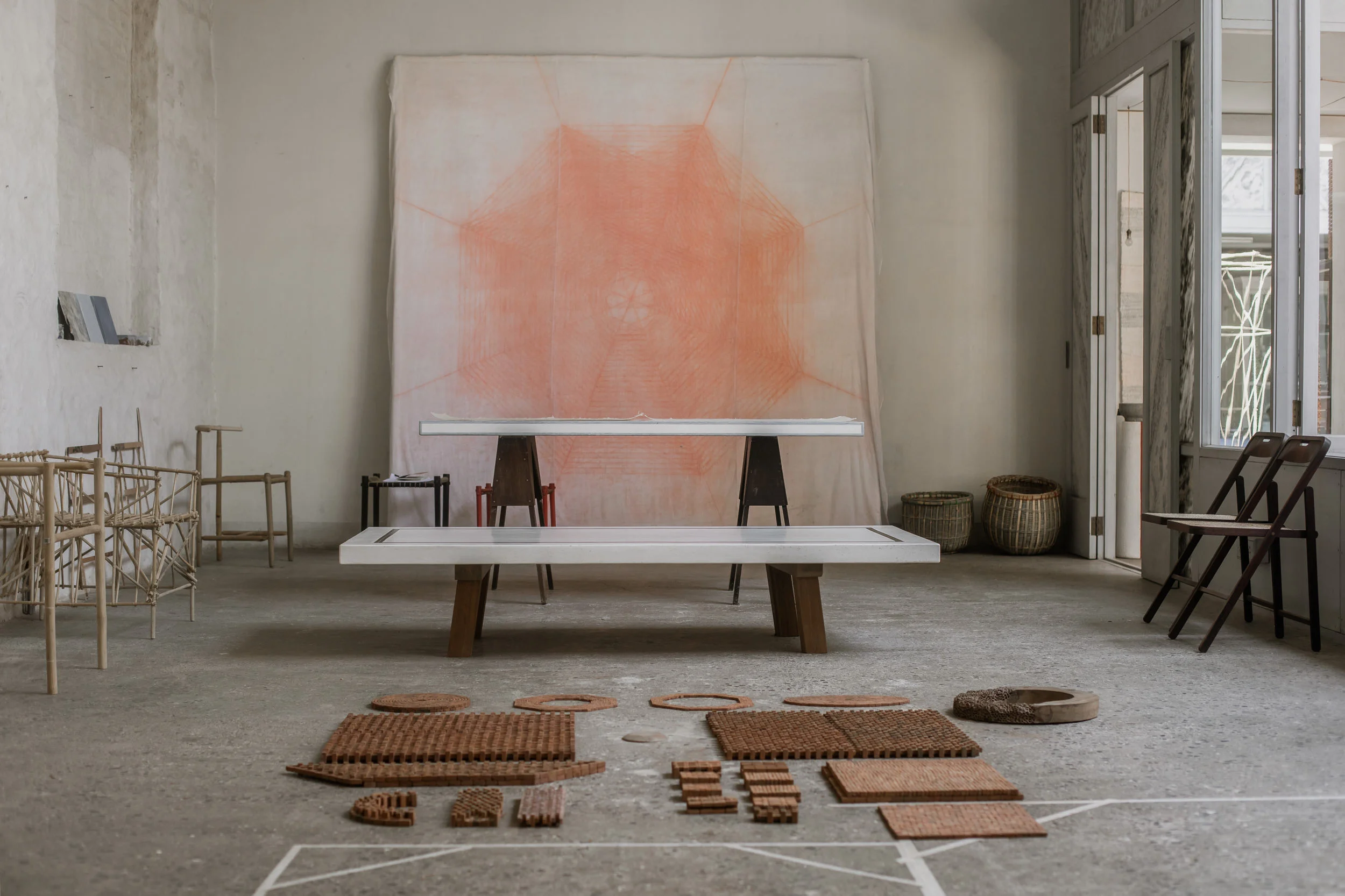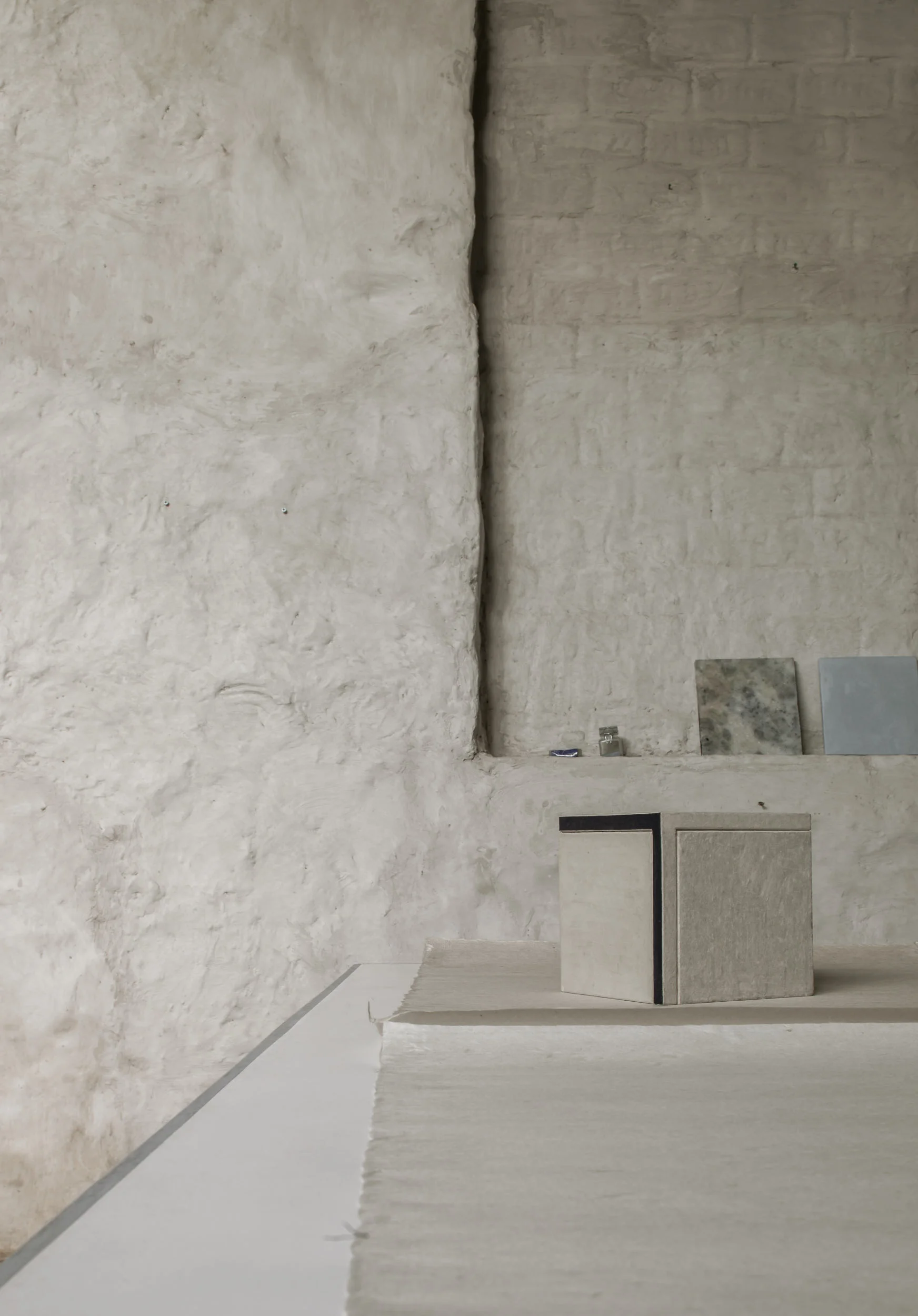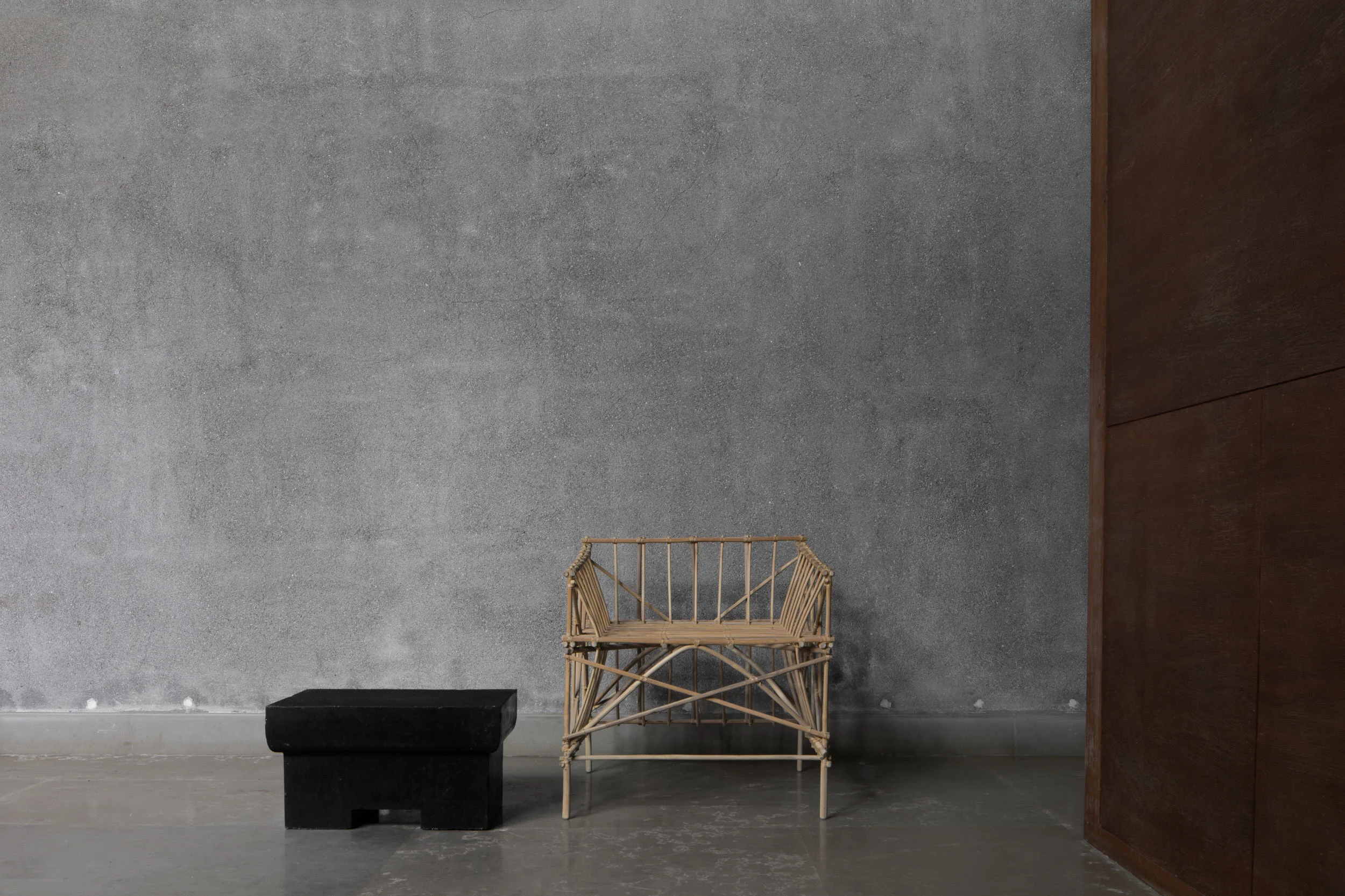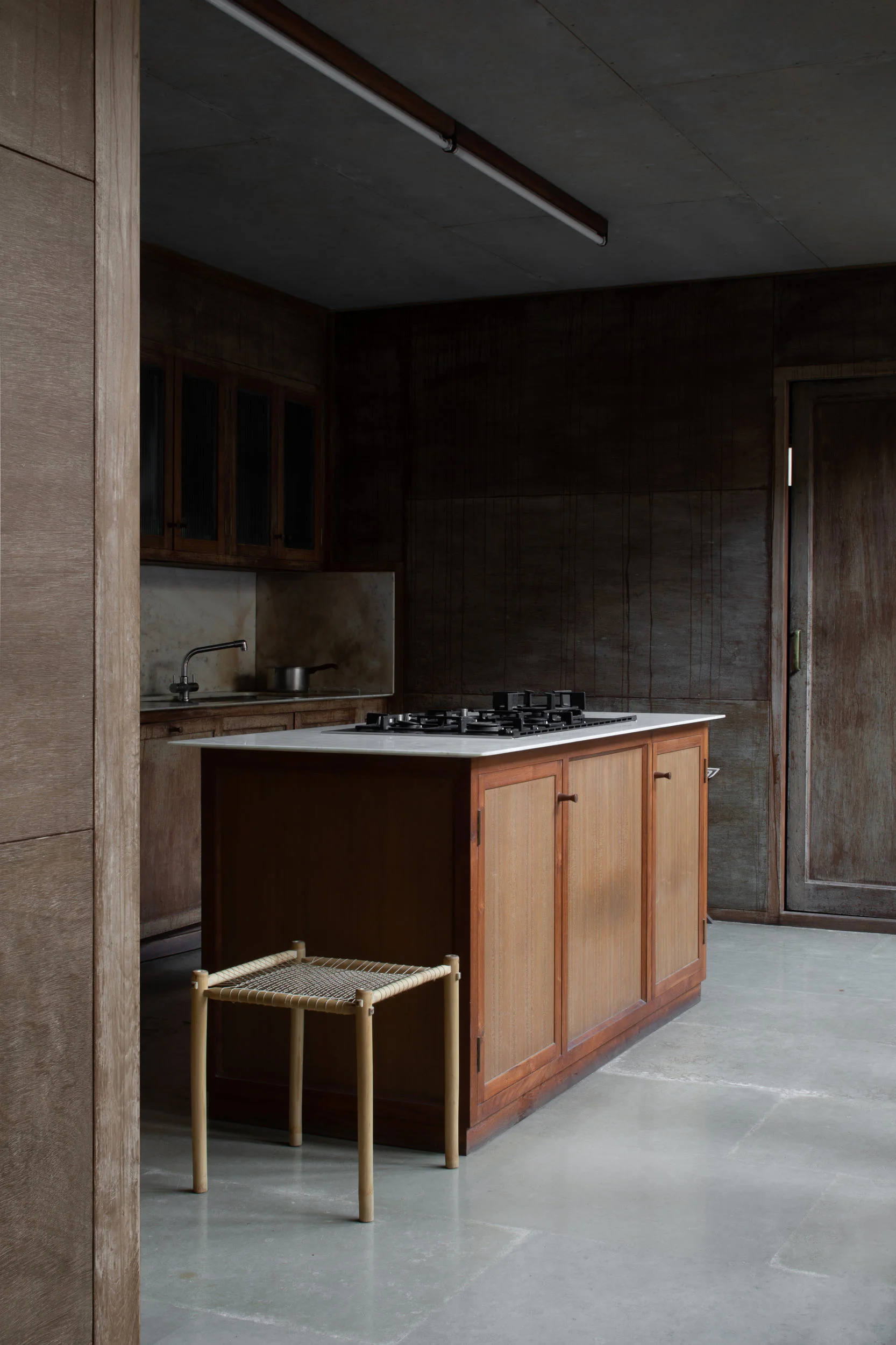Q+A with Bijoy Jain / Mumbai Studio: On His Collaboration with MANIERA
In 1995, after studying and working in the United States along with notable minds like Richard Meier, Bijoy Jain returned to India and founded his own firm, Mumbai Studio. Since then, the studio has developed a body of work that references aspects of both Indian and Western cultures through its unique approach.
The studio works collaboratively with local artisans, craftspeople and draftsmen to design and build projects through an explorative creative process.
This weekend, the studio launched new furniture and objects for MANIERA in Brussels. The pieces are the result of an intense and profound material research.
EL: We’ve often read about the importance of the notion of care and the idea of being inclusive in your design. How do these ideas concretely appear in your work?
BJ: Care and inclusivity is fundamental as a response in all things considered. The aim is to seek an expression emerging through thought, material, maker and receiver. Wherein the identity of the collective expression can transcend boundaries and free itself from locale. The pieces for Maniera strive to reflect this ethos.
EL: You seem to have a keen interest in artifacts and for traditional techniques. Where does that come from? What do these types of practices have to teach us?
BJ: Artefacts are merely a record of an expression of a gesture. Objects or symbols as means of communication between civilisations near and far.
Nostalgia of tradition is not what interests me ... it is to observe the basis of our evolution and its expression through time. If there is truly one action that best describes our tradition, it is affection. I would say this is what one seeks for in the work.
EL: You have a specific way of doing things which includes working with teams of local artisans and taking your time to complete projects. Why is it essential to allow slowness in the process of design?
BJ: Slowness is not about the quantitative aspect of time.
When there is consideration to strive for an equilibrium in the process of design between material, man and machine, there is possibility of slowing time down. It is more about our perception. In other words making space where seemingly there is none.
EL: At the core of your organization, collaboration and openness take a significant place. In a lecture you did, you even referred to Studio Mumbai as being closer to an art practice than to traditional architectural practice. Do you see architecture as being a process-based medium?
BJ: Architecture as a medium can be responsive in all its variables, enabling opportunity for it to be open and inclusive to the forces of nature.
The exacting image not being the pursuit, as this would render the architecture absolute.
EL: Your projects are related to nature and environment - through the choices of materials, but also a sustainable, contextual and local approach. Do you feel like architects and designers have a responsibility regarding this matter?
BJ: Each individual is responsible for what they care about. This is not exclusive to architecture or design.
EL: Following this idea of constructing contextually taking into account elements, nature and even energies; would you say that you have an intuitive vision of your work?
BJ: Intuition in ones work is critical. Trusting intuition through work is the practice, being observant in this method allows for learning and discovery.
EL: What was the main idea behind the pieces you conceived for MANIERA?
BJ: The pieces for Maniera are motivated from the idea of acting on materials or things found in our immediate landscape. Made from stone, brick, bamboo, wood, paper, thread and alloys of metal, the methods of making are rudimentary and precise using simple tools requiring the dexterity of hand, mind, body and machine. The pieces potentially can exist in geographies where water, air and light are present for their being.
EL: Do you work differently when you create for a gallery than when it is for a specific client? What do you do differently?
BJ: The motivation to create is our only function, to explore the phenomenon of man in nature - nature in man.
All images by Jeroen Verrecht

















